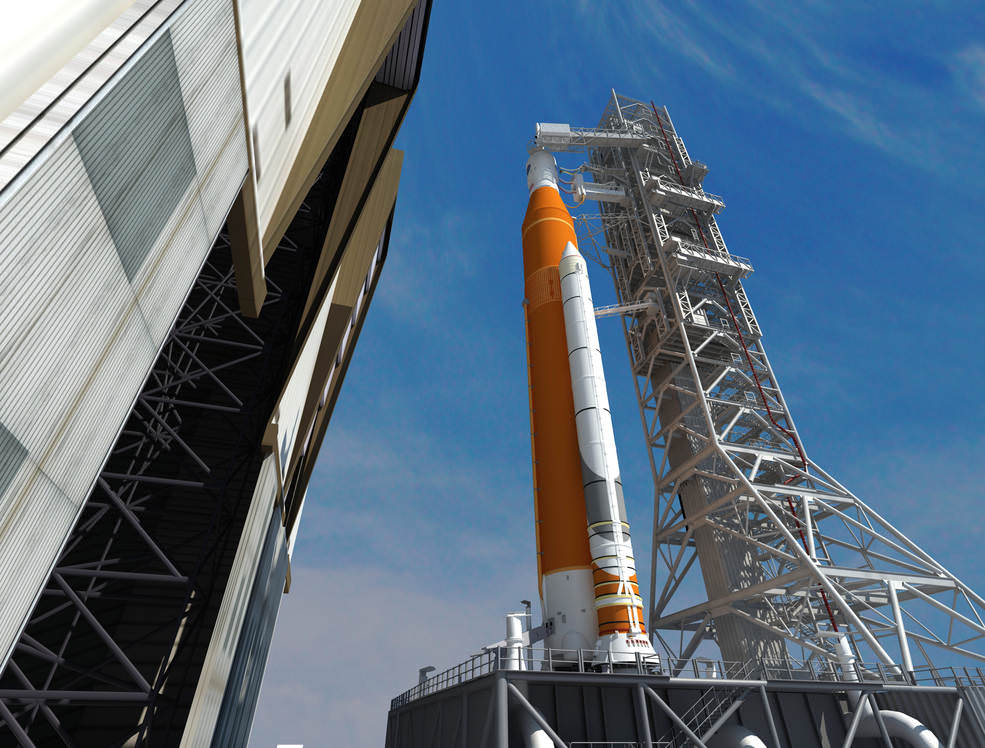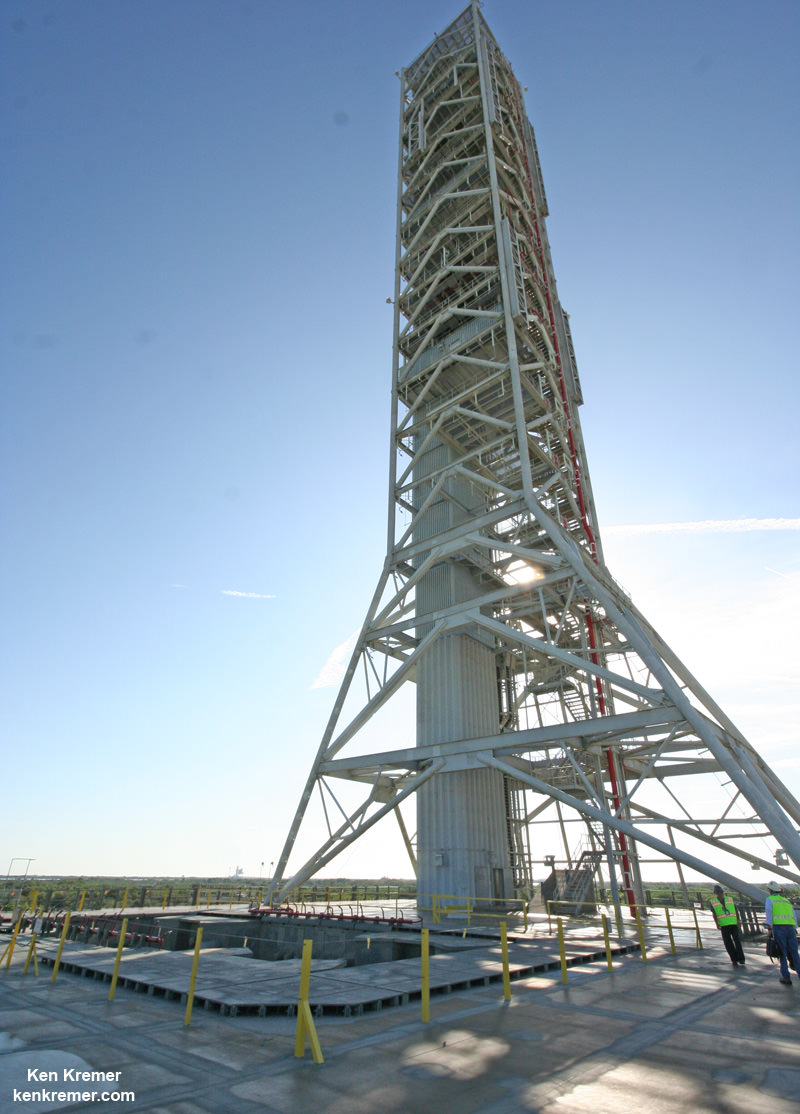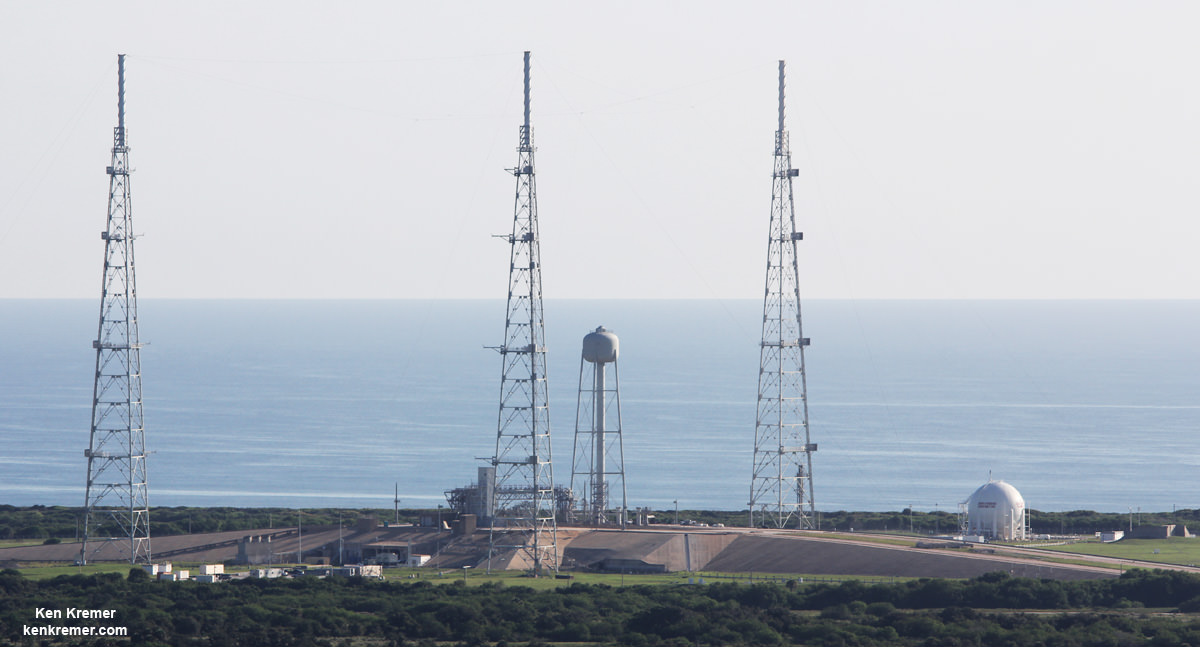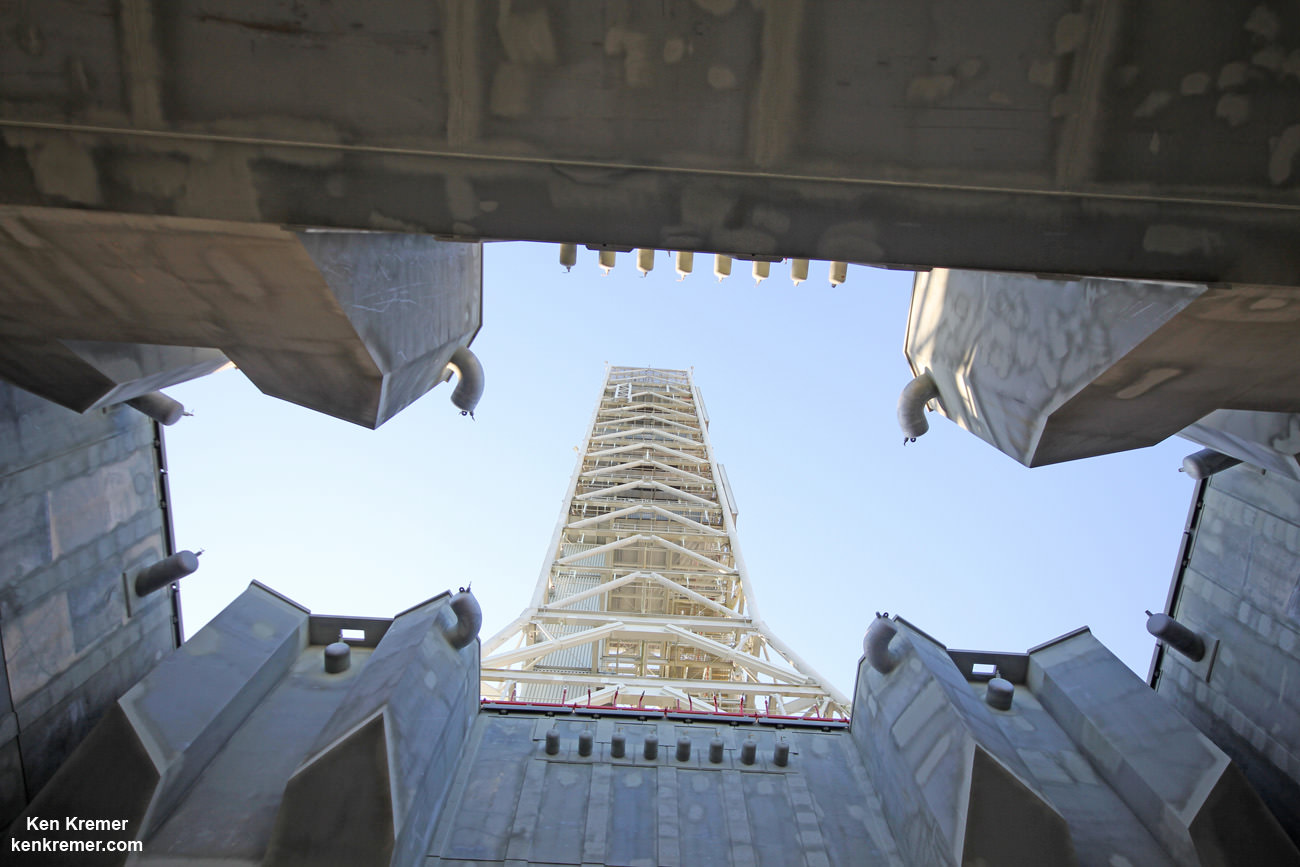
KENNEDY SPACE CENTER, FL – Modernization of NASA’s launch infrastructure facilities at the Kennedy Space Center supporting the new SLS/Orion architecture required to send astronauts on a Journey to Mars in the 2030s, has passed a comprehensive series of key hardware reviews, NASA announced, paving the path towards full scale development and the inaugural liftoff by late 2018.
The facilities and ground support systems that will process NASA’s mammoth Space Launch System (SLS) rocket and next generation Orion manned deep space capsule at NASA’s Kennedy Space Center in Florida successfully completed a painstaking review of the plans by top agency managers and an independent team of aerospace experts.
SLS will be the most powerful rocket the world has ever seen. It will propel astronauts in the Orion capsule on deep space missions, first back to the Moon by around 2021, then to an asteroid around 2025 and then beyond to the Red Planet in the 2030s – NASA’s overriding and agency wide goal.
The Ground Systems Development and Operations Program (GSDO) group within NASA is responsible for processing SLS and Orion.
“Over the course of a few months, engineers and experts across the agency reviewed hundreds of documents as part of a comprehensive assessment” said NASA.

Among the GSDO ground support facilities evaluated in the launch infrastructure review are the Vehicle Assembly Building (VAB) where the rocket components are stacked, the mobile launcher used to roll out SLS/Orion to Launch Pad 39B atop a modified crawler transporter and the Multi-Payload Processing Facility that will fuel the Orion spacecraft with propellants prior to stacking atop the rocket.
In December, GSDO completed a critical design review (CDR) of the facilities and ground support systems plans.
Then in January, a Standing Review Board comprising a team of aerospace experts completed an independent assessment of program readiness.
The Standing Review Board “confirmed the program is on track to complete the engineering design and development process on budget and on schedule.”
“NASA is developing and modernizing the ground systems at Kennedy to safely integrate Orion with SLS, move the vehicle to the pad, and successfully launch it into space,” said Bill Hill, deputy associate administrator of NASA’s Exploration Systems Development Division at the agency’s Headquarters in Washington, in a statement.
“Modernizing the ground systems for our journey to Mars also ensures long-term sustainability and affordability to meet future needs of the multi-use spaceport.”

Fabrication, installation and testing of Kennedy’s ground systems can now proceed.
“The team is working hard and we are making remarkable progress transforming our facilities,” said Mike Bolger, GSDO Program Manager. “As we are preparing for NASA’s journey to Mars, the outstanding team at the Kennedy Space Center is ensuring that we will be ready to receive SLS and Orion flight hardware and process the vehicle for the first flight in 2018.”
The maiden test flight of the SLS/Orion is targeted for no later than November 2018 and will be configured in its initial 70-metric-ton (77-ton) version with a liftoff thrust of 8.4 million pounds.

Meanwhile the welded skeletal backbone for the Orion EM-1 mission recently arrived at the Kennedy Space Center on Feb. 1 for outfitting with all the systems and subsystems necessary for flight.
Furthermore, earlier this month on March 10, NASA engineers conducted a successful test firing of the first of the RS-25 rocket engines destined to power the core stage of the SLS stage rocket. The 500 second long hot fire test of engine No. 2059 was carried out on the A-1 Test Stand at NASA’s Stennis Space Center in Bay St. Louis, Mississippi.
SLS-1 will boost the unmanned Orion EM-1 capsule from KSC launch pad 39B on an approximately three week long test flight beyond the Moon and back.

NASA plans to gradually upgrade the SLS to achieve an unprecedented lift capability of 130 metric tons (143 tons), enabling the more distant missions even farther into our solar system.
Stay tuned here for Ken’s continuing Earth and Planetary science and human spaceflight news.

